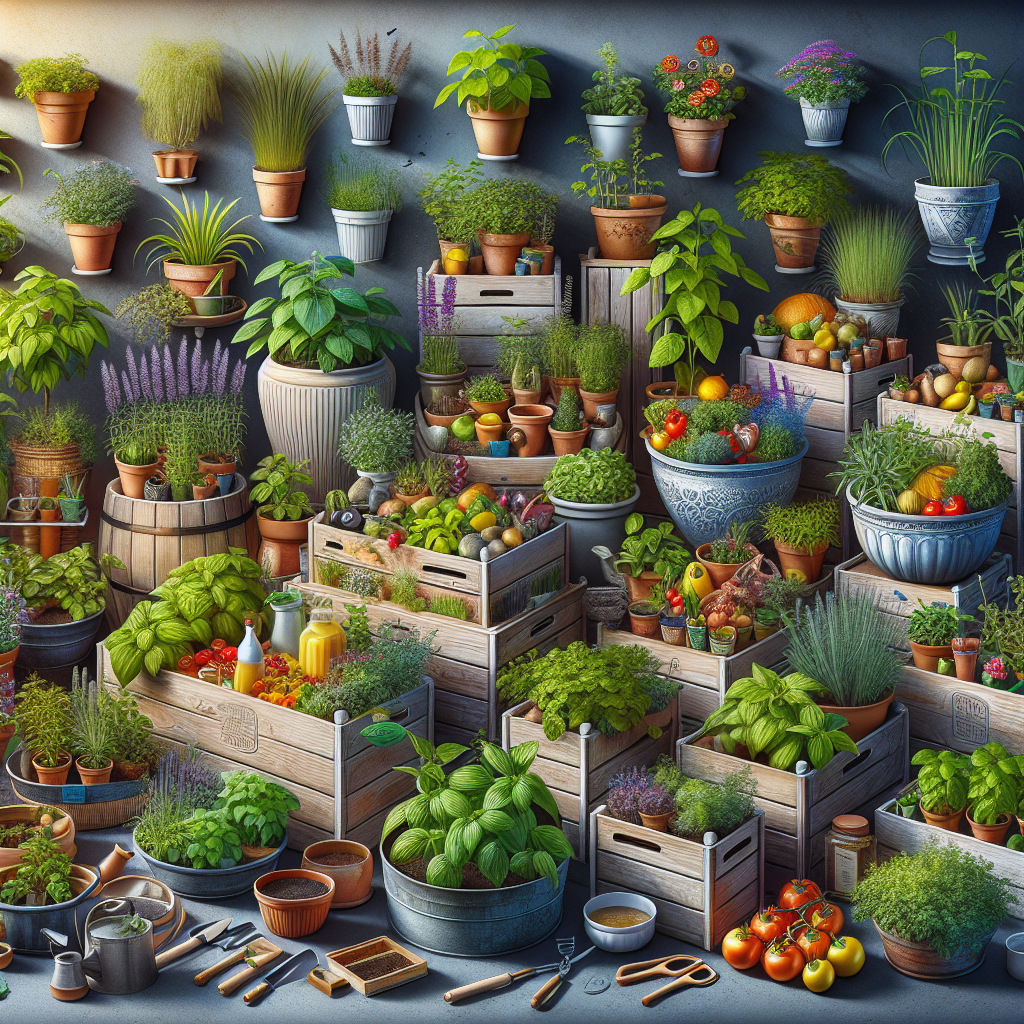Container gardening is a popular and convenient way to grow plants, flowers, and vegetables in limited outdoor spaces. Whether you live in an apartment with a small balcony or have limited yard space, container gardening allows you to bring nature to your doorstep. However, this type of gardening comes with its own set of challenges that gardeners need to overcome in order to have a successful harvest. From choosing the right containers to dealing with pests and diseases, there are several common obstacles that container gardeners face. In this article, we will discuss some of the most common challenges in container gardening and provide practical tips on how to overcome them.
When it comes to container gardening, one of the biggest challenges is selecting the right containers for your plants. The type of container you choose can have a significant impact on the health and growth of your plants. Plastic, ceramic, metal, or terracotta containers all have their pros and cons when it comes to moisture retention, insulation, and weight. Additionally, the size of the container is crucial as some plants require more room for their roots to grow deep and wide.
**Choosing the Right Containers**
Selecting the right containers for your plants is crucial for successful container gardening. You should consider factors such as material, size, drainage holes, and aesthetics when choosing containers for your garden. Plastic containers are lightweight and durable but may not be as aesthetically pleasing as ceramic or terracotta pots. Ceramic pots are attractive but can be heavy and prone to cracking in extreme temperatures. Metal containers are durable but may heat up quickly in direct sunlight.
When it comes to size, larger containers are generally better for most plants as they provide more room for root growth and moisture retention. However, smaller containers can work well for herbs or other small plants that don’t require as much space. Make sure that your containers have drainage holes at the bottom to prevent water from pooling around the roots of your plants.
**Watering**
Proper watering is essential for container gardening success but can be tricky to get right. Overwatering can lead to root rot and fungal diseases while underwatering can cause wilting and stunted growth in your plants. The key is to water consistently based on the needs of your specific plants.
To determine when your plants need water, stick your finger into the soil up to the second knuckle. If it feels dry at that depth, it’s time to water. Water slowly until you see excess water draining out of the bottom of the container. Make sure not to let your plants sit in standing water as this can lead to root rot.
**Sunlight**
Another common challenge in container gardening is ensuring that your plants receive an adequate amount of sunlight each day. Most vegetables and flowering plants require at least 6-8 hours of direct sunlight to thrive. If you don’t have access to direct sunlight on a balcony or patio, consider using reflective surfaces such as white walls or mirrors to redirect sunlight onto your plants.
**Pests & Diseases**
Pests and diseases can wreak havoc on container gardens if left unchecked. Common pests such as aphids, spider mites, and caterpillars can quickly multiply and destroy your plants if not controlled early on. To prevent pest infestations, regularly inspect your plants for any signs of pests or diseases such as yellowing leaves or holes in foliage.
You can also use organic pest control methods such as neem oil spray or ladybugs to deter pests naturally without using harmful chemicals. Additionally, practicing proper plant hygiene by removing dead leaves or debris from around your containers can help prevent disease outbreaks.
**FAQs**
1) What are some easy-to-grow plants for beginners in container gardening?
Some easy-to-grow plants for beginners in container gardening include herbs like basil, mint, parsley; vegetables like tomatoes, peppers; flowers like marigolds; succulents like jade plant
2) How often should I fertilize my container garden?
It depends on the type of plant you’re growing and the fertilizer you’re using but generally fertilize once a month during growing season with a balanced fertilizer
3) Can I reuse potting soil from last year?
Yes! You can reuse potting soil from last year but make sure to mix in fresh compost or perlite before planting new crops
4) How do I know if my plant needs repotting?
If roots start coming out from drainage holes at bottom or top growth slows down even after regular watering then it’s time for repotting
5) How do I protect my container garden from extreme weather conditions?
Move containers indoors during extreme weather conditions like frost or heatwave; use shade cloth during hot summers; wrap pots with insulating materials during frost periods













